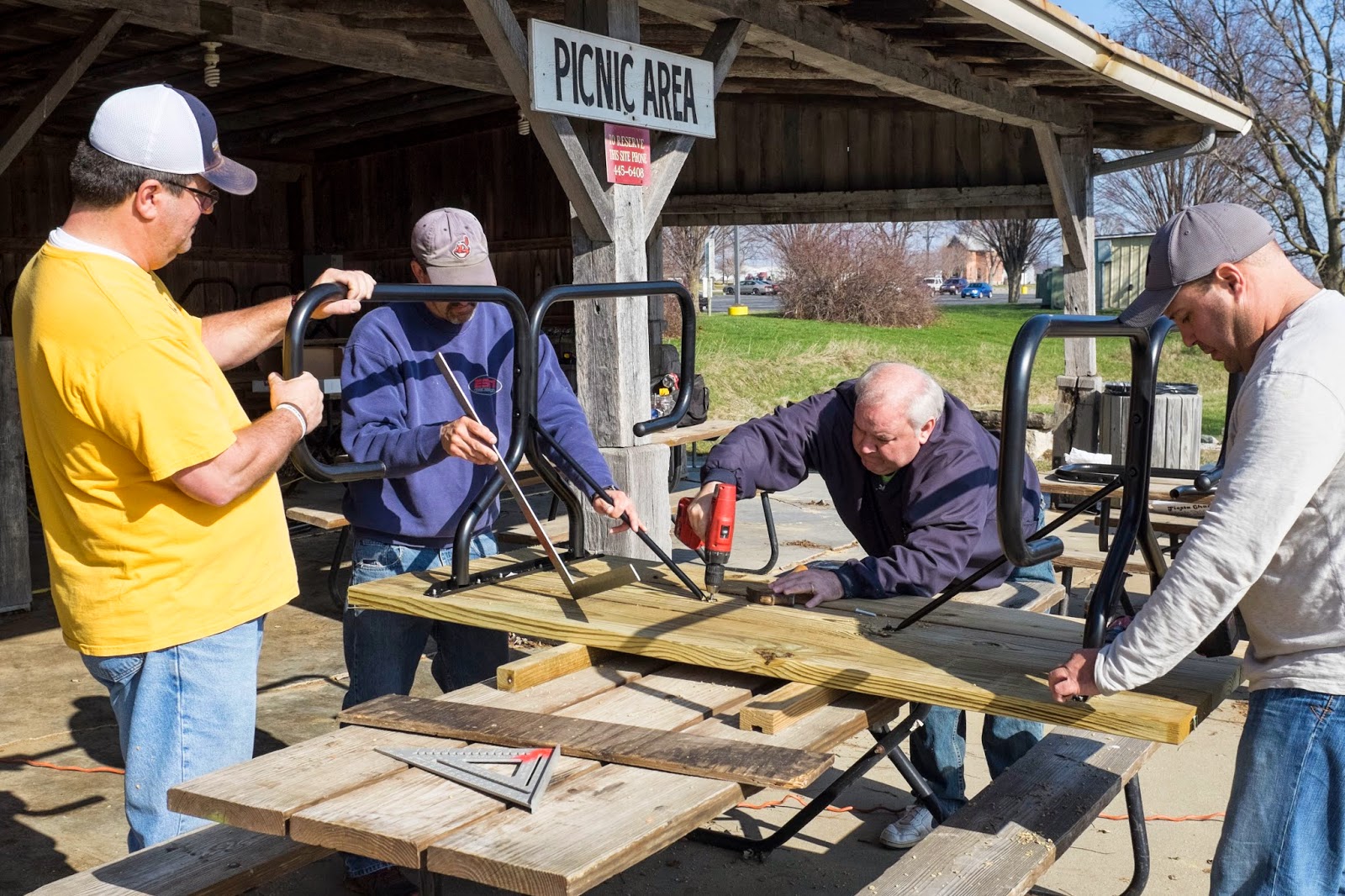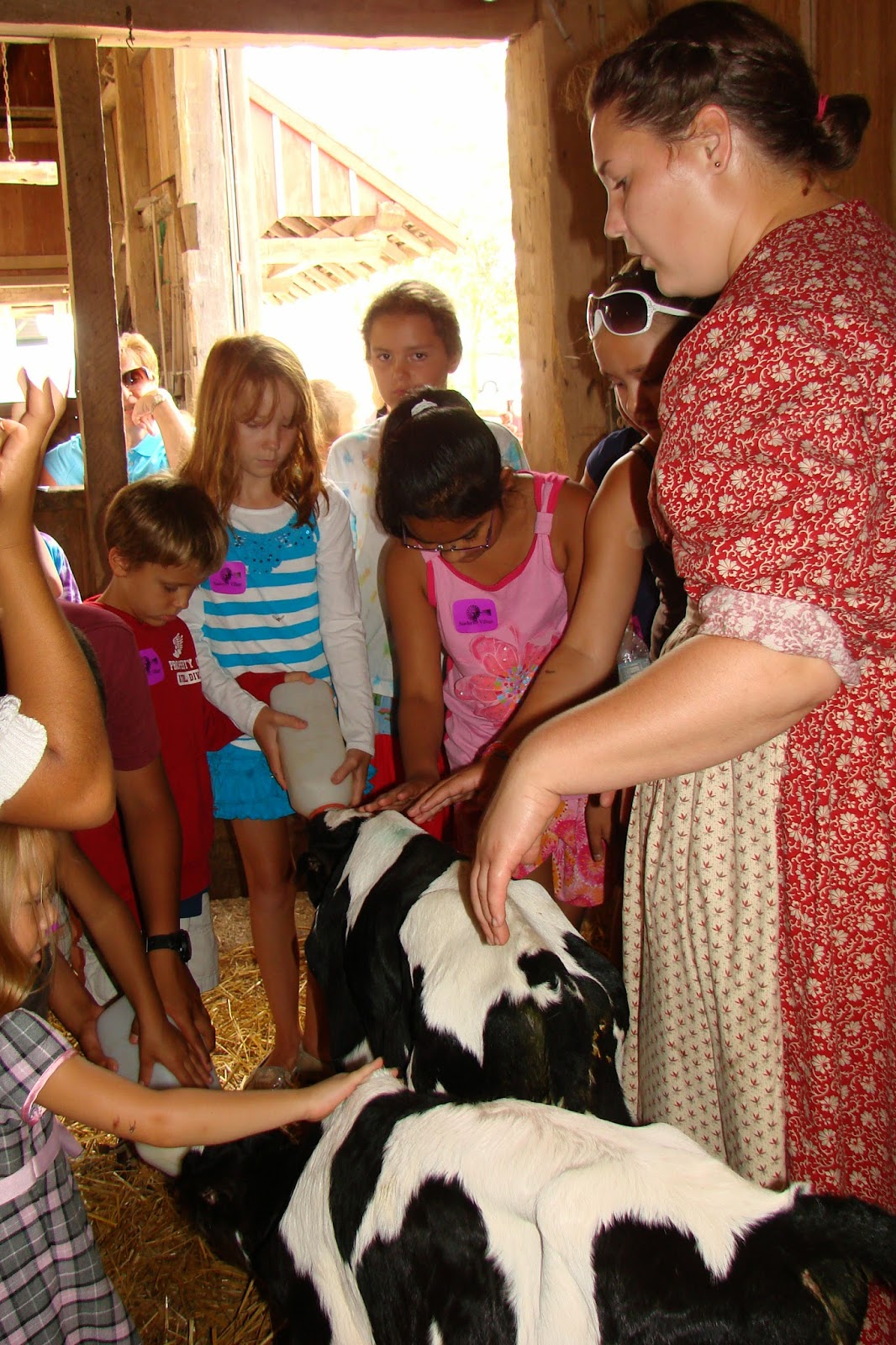As part of our blog series for this year, we're pleased to introduce
you to another one of the many experts we have working at Sauder Village. From gardening,
crafts and preserving your artifacts to education, farming and historic cooking –
we hope you enjoy meeting some of our talented staff and will take time to
ask them a question or two. What a great way to learn something new!
We hope you enjoy meeting our Livestock Manager, Katie Frey. Please post any questions you have for Katie in the comment section below. Thanks!
Meet Katie Frey
Title: Livestock Manager. Katie Frey started working as a groomer at Sauder Village as a summer job during college. About 3 seasons ago she was hired as our Livestock Manager.
Main Responsibilities: Katie oversees all aspects of the livestock at Sauder Village. This includes feeding/nutrition, health/medical, and reproduction. She also does historic demonstrations and helps educate guests about our livestock.
Favorite Part of her Job: “I just really love working with animals and it's fun to teach others about our history and how livestock were such an integral part in shaping it,” Katie shared.
Anything new for guests to see this summer in our barnyard areas? “Of
course! We will be having piglets born throughout the season and two
calves are expected - one in May and the other in August. We will have baby chicks, including a new breed called Dominique that will take
the place of the Barred Plymouth Rocks, out at Pioneer Settlement. We
also have two different breeds of sheep. The Merino will be housed at
Pioneer Settlement and the Southdown are in the 1910 Barnyard Area."
Favorite Farm Animal at Sauder Village: “I grew up raising beef cattle
and continue to do so, so I have always loved cattle. I have
never been around pigs much or raised them before, but Ms. Delores Piggy
has really made me fond of her,” Katie shared. “Therefore I have to say
it is a toss-up between our Jersey cow, Brownie, and Ms. Delores Piggy.
They are both really sweet and fun to work with. I do love all of our
animals though!”
What are your hobbies? Katie shared . . . I raise beef cattle. We breed and sell cattle for youth to show and that keeps me very busy! When I was in 4-H we showed cattle nationally as well as state-wide and it really gets in your blood. We also raise a few Boer goats for youth to show and I breed Australian Shepherd dogs. I also love to read books, play board games, watch movies and play cards. I also help with a youth program at church. Gardening is also a hobby. I like to collect seeds from year to year to see if I can grow my own flowers and vegetables. I usually create one new flower bed each year. My grandmother established most of the flower beds on our property, so now I am working on revamping those beds while still utilizing the same flowers that she planted.
What is your greatest accomplishment at Sauder Village? I really love that we have started to use our own products in our historic cooking demonstrations at the Village. I work closely with the foodways supervisor Gail Richardson and this past year we have incorporated our own eggs, milk and other products into our historic cooking. I think that this helps make our demonstrations so much more authentic and is a great way for guests to see how food gets to the table.
What other thoughts would you like to share about our farm animals?
“I always want to remind people that we are a working farm and that everyone needs to be careful around our farm animals. While animals may seem harmless, they can hurt someone without meaning to if not handled in a proper manner,” Katie shared. Katie also wants guests to remember that our animals are fed a strict diet and something foreign can cause them to become very sick, so please don’t feed them grass, candy, or part of your ice-cream cone!
What do you hope people will learn from our livestock program at Sauder Village? “I hope that guests walk away with
the knowledge of how important farm animals were to the early pioneers as
well as how important they are today,” Katie shared. “Livestock not only
provided and continues to provide food, but also a means of transportation and companionship.”
Katie also shared that she hopes our guests really come away with how
much we love our animals at Sauder Village. “Growing up on a
family farm, I also hope guests realize how much farmers love their animals as well. We
are just caring people who love our animals, love what we do, and work
very hard to provide food for others.”
What other information would you like to share?
We do practice modern day veterinary protocols at Sauder Village, so I am up-to-date on many concerns going on within the food industry today. Any questions or concerns about modern day food health issues or treatments of the animals I will welcome and try to answer to the best of my ability. And, if I don't know an answer to your question I will happily point you in the right direction to find out the answer.





























